Seaborn reserves a spot for each individual hue value, even when some of these values are missing. When many hue values are missing, this leads to annoying open spots. (When there would be only one box per x-value, dodge=False would solve the problem.)
A workaround is to generate a separate subplot for each individual x-label.
Reproducible example for default boxplot with missing hue values
import matplotlib.pyplot as plt
import seaborn as sns
import pandas as pd
import numpy as np
np.random.seed(20230206)
df = pd.DataFrame({'label': np.repeat(['label1', 'label2', 'label3', 'label4'], 250),
'cat': np.repeat(np.random.choice([*'abcdefghijklmnopqrst'], 40), 25),
'value': np.random.randn(1000).cumsum()})
df['cat'] = pd.Categorical(df['cat'], [*'abcdefghijklmnopqrst'])
sns.set_style('white')
plt.figure(figsize=(15, 5))
ax = sns.boxplot(df, x='label', y='value', hue='cat', palette='turbo')
sns.move_legend(ax, loc='upper left', bbox_to_anchor=(1, 1), ncol=2)
sns.despine()
plt.tight_layout()
plt.show()

Individual subplots per x value
- A FacetGrid is generated with a subplot ("facet") for each x value
- The original hue will be used as x-value for each subplot. To avoid empty spots, the hue should be of string type. When the hue would be
pd.Categorical, seaborn would still reserve a spot for each of the categories.
df['cat'] = df['cat'].astype(str) # the column should be of string type, not pd.Categorical
g = sns.FacetGrid(df, col='label', sharex=False)
g.map_dataframe(sns.boxplot, x='cat', y='value')
for label, ax in g.axes_dict.items():
ax.set_title('') # remove the title generated by sns.FacetGrid
ax.set_xlabel(label) # use the label from the dataframe as xlabel
plt.tight_layout()
plt.show()

Adding consistent coloring
A dictionary palette can color the boxes such that corresponding boxes in different subplots have the same color. hue= with the same column as the x= will do the coloring, and dodge=False will remove the empty spots.
df['cat'] = df['cat'].astype(str) # the column should be of string type, not pd.Categorical
cats = np.sort(df['cat'].unique())
palette_dict = {cat: color for cat, color in zip(cats, sns.color_palette('turbo', len(cats)))}
g = sns.FacetGrid(df, col='label', sharex=False)
g.map_dataframe(sns.boxplot, x='cat', y='value',
hue='cat', dodge=False, palette=palette_dict)
for label, ax in g.axes_dict.items():
ax.set_title('') # remove the title generated by sns.FacetGrid
ax.set_xlabel(label) # use the label from the dataframe as xlabel
# ax.tick_params(axis='x', labelrotation=90) # optionally rotate the tick labels
plt.tight_layout()
plt.show()






